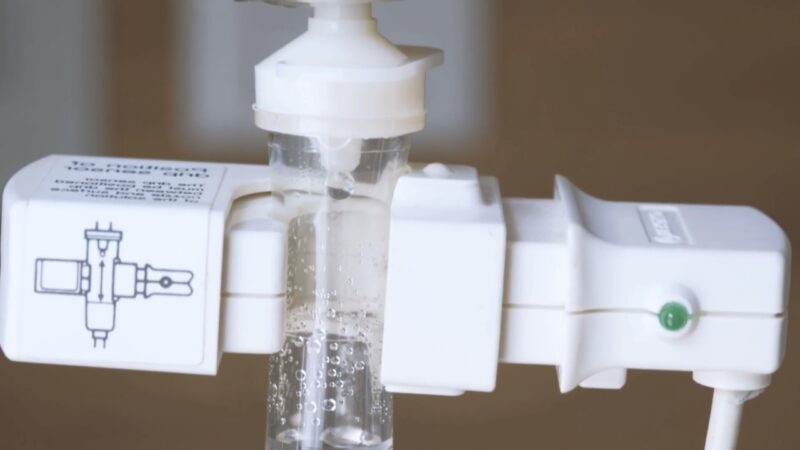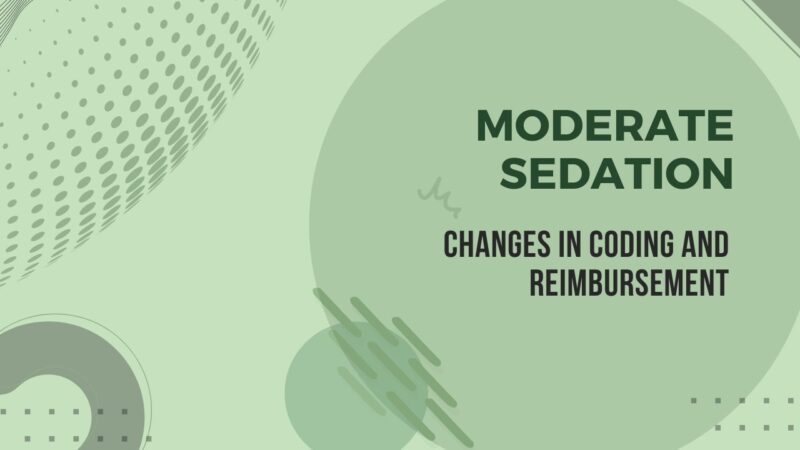Steve G. Peters, M.D. is Professor of Medicine in the Division of Pulmonary and Critical Care at the Mayo Clinic in Rochester, MN.
Disclosure: Dr. Peters is on the NAMDRC Board of Directors and serves as Advisor to the CPT Panel of the AMA, representing the American College of Chest Physicians.
Current Procedural Terminology (CPT®) is owned and operated by the American Medical Association.

Beginning in 2017, the documentation, coding and reimbursement for moderate (conscious) sedation have changed. This arose in response to increasingly common clinical scenarios in which a second individual provides sedation in addition to the primary procedural specialist.
Working with the Current Procedural Terminology panel of the AMA and the RBRVS Update Committee (RUC), CMS recommended unbundling moderate sedation services that previously had been included in many procedures.
New CPT codes were developed and RUC valuation led to CMS removal of 0.25 work RVUs from bronchoscopy codes to account for sedation in patients > 5 years of age. If the bronchoscopist also performs sedation, one must bill the additional code (intended to be net neutral).
Moderate (conscious) sedation is defined as a drug-induced depression of consciousness during which patients respond purposefully to verbal commands or light tactile stimulation. Cardiovascular function and spontaneous ventilation are adequate.

The moderate sedation codes should not be used to report the administration of medications for pain control, relief of anxiety, deep sedation, or monitored anesthesia care (CPT codes 00100-01999).
Earlier codes 99143, 99144, 99145 have been deleted. To report moderate sedation provided by the same physician or other qualified health care professional performing the diagnostic or therapeutic service use 99151, 99152, and 99153. Codes 99148, 99149, 99150 have also been deleted. To report moderate sedation services provided by a qualified individual other than the one performing the procedure, use 99155, 99156, and 99157.

The code family describing moderate sedation begins with code 99151 for children < 5 years of age. Abbreviated versions of the subsequent CPT® codes are shown below.
- 99151 Moderate sedation services provided by the same physician or other qualified health care professional performing the diagnostic or therapeutic service that the sedation supports, requiring the presence of an independent trained observer to assist in the monitoring of the patient’s level of consciousness and physiological status; initial 15 minutes of intraservice time, patient younger than 5 years of age
- 99152 initial 15 minutes provided by the same physician… age 5 years or older
- + 99153 each additional 15 minutes intraservice time (List separately in addition to code for primary service)
- 99155 Moderate sedation services provided by other physicians; initial 15 minutes of intraservice time, patient younger than 5 years of age
- 99156 initial 15 minutes of intraservice time, patient age 5 years or older
- + 99157 each additional 15 minutes intraservice time
The intraservice work is defined from the beginning to the end of the face-to-face sedation procedure. It is important to note that the pre-and post-service work directly related to sedation are included in the codes, but not added to the time reported.
It is also noteworthy that only the first 15 minutes of sedation services include physician work for reimbursement, as that represents the value of the unbundled service, and the additional time-based codes are deemed to reflect practice expense.
While we’re discussing changes in the medical field, it’s also worth noting the recent significant development where the FDA made a crucial decision related to Long-Acting Beta Agonists (LABAs) and Inhaled Corticosteroids (ICS).
Below Are Sample Q&A from our NAMDRC Presentation and Discussion

1. Which One of The Following Is Most Appropriate for Moderate Sedation Code 99152?
a) Sedation for bone marrow biopsy in a 4 year old
b) 5 minutes of sedation for intraosseous line placement in a 70 year old
c) 15 minutes of sedation and muscle relaxant for electroconvulsive therapy in a 60 year old
d) 15 minutes of sedation for thoracostomy chest tube placement in a 20 year old
Answer: d. For (a) would use the code for < 5 years, for (b) the time of service is too brief, and (c) would use anesthesia codes.
2. Which Statement Is Correct About Billing by Another Provider of Moderate Sedation Code 99156, Assisting You During a Bronchoscopy Procedure?
a) Another pulmonologist in your group may bill the service
b) A nurse anesthetist from another group can code the service
c) Your physician assistant may code the service
d) An anesthesiologist may not use these codes
Answer: b. Other providers in the same group should not use code 99156. The codes are intended for physicians or other qualified healthcare providers, including CRNAs and anesthesiologists.

